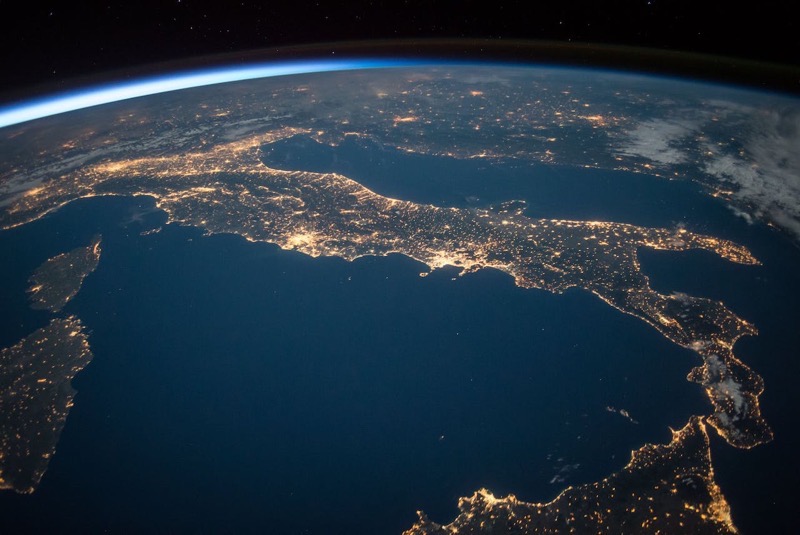A new study suggests that all life on Earth evolved from a single-celled bacteria-like microbe species called Archaea and Eukaryotes roughly 3.5 billion years ago. A few million years later, the ‘Homo antecessor,’ a likely common ancestor of humans, chimps and neanderthals, emerged.
Estimates say humans share 99 per cent of their DNA with the now-extinct neanderthals and 95-99 per cent DNA with chimpanzees—their closest living evolutionary relative. More than six-million years ago, humans and chimps diverged. Since then, humans have come a long way—from when they were almost chimp-like. However, chimps, with somewhat evolved intelligence, have still a long way to go.
How did this miracle happen? Why are humans the only animals to have evolved with a higher intelligence over the past few million years, whereas other animals are in the nascent stages of the intelligence evolution timeline? Is it because of how we worked our brains and processed data to evolve into a more rational species? Or, were we custom-built for a purpose by a greater force?
Our fertile imagination has spawned many theories and conspiracy theories about intelligent aliens inhabiting other planets. But after years of research, we are yet to verify that conclusively. At least our solar system doesn’t seem to have any parallels. However, it is said that other Solar systems might have an Earth-like planet. For instance, let’s look at the Cassini spacecraft.
In September 2017, the Cassini space probe deliberately crashed into Saturn’s atmosphere, ending its nearly two-decade-long mission. Humans chose this method to prevent biological contamination of Saturn’s moons, now thought to offer potentially habitable environment.
What did Saturn do about it? Nothing. Why? Because we assume there is no one on Saturn, or, at least, that there is no evolved intelligent species on that planet. So it is unlikely that we would see a hostile interstellar object. But what if there is intelligent alien life on Saturn? Would they send a Cassini like spacecraft to study the Earth?
There’s an answer to that: ‘Oumuamua.’ In September 2017, the first-known interstellar object to visit our solar system was discovered by the University of Hawaii’s Pan-STARRS1 telescope; it flew past the Sun at a speed of 196,000 miles per hour. When first spotted, ‘Oumuamua’ was 33 million kilometres from the Earth. Had it posed a threat, would we have had a series of strategic responses to neutralise it?
That brings us back to the question about human evolution.
Planet Earth, with a diameter of roughly 8000 miles, is like a nanoparticle compared to the infinite space housing it, which is estimated to be about 13 billion light years in diameter. With at least 200 billion galaxies, the Universe is possibly filled with around ten quadrillion planets. But is Earth the only planet in the universe that provides an environment that sustains life? Did humans evolve as an intelligent species because of the unique conditions on Earth?
From a human standpoint, given the boundaries of our knowledge, one could argue that to be the case; Evolution and adaptation seem to be workable hypotheses.
For instance, the Mariana Trench—at a depth of 36,037 ft and with temperatures between – 1°c and 4°c—has a crushing water pressure on the floor of more than 8 tonnes per square inch; it is more than 1000 times the pressure felt at sea level and is the equivalent of having fifty jumbo jets piled up on top of a person.
The floor is covered in vents, and the temperature around the vents can reach up to 300°c. The venting fluid is highly acidic, while the water from the deep ocean is slightly basic, and the atmosphere is a mix of Sulphur, Carbon dioxide, Methane and Hydrogen. However, myriad creatures have evolved, showing an incredible resistance to temperature extremes. They have different proteins – an evolutionary adaptation – which help them live under conditions comparable to Europa, one of Jupiter’s moons.
Does that mean there is enough premise to believe there could be enough bacteria on one of the planets or moons to spawn human-like alien species one day?
The Milky Way is almost 13.5 billion years in the making. Surely, that’s enough time for any bacteria to produce human-like species on Europa or Titan (Saturn’s moon), for that matter. But are there any? Cassini’s adventure doesn’t seem to suggest so.
The crux of this evolutionary journey for humans is this gift of a 3-pound mass of complex tissue called the brain, which has helped create everything — from works of art and flying crafts to detecting & curing diseases and producing complex materials and innovations.
Compare the human brain to an elephant’s brain, which weighs 11-13 pounds — four times the size of a human brain. Yet more elephants are in human captivity, while the reverse is unimaginable. In terms of muscle power, humans are no match for many of the animals. Yet, we still have the cerebral capacity, knowledge and technology to catch tigers & whales alive. Will the animals catch up?
Not without Science and technology, the human brain’s finest output, a one-of-a-kind product which по other species has been able to produce or master.
It has rocketed humans to the top of the hierarchy chart. However, while technology has brought with it many positives, the narcissist human brain has been able to create some very negative ones, too. A case in point is nuclear weapons.
Nuclear power powers the cities of the world, yet there is nothing more destructive than the 13,885 nuclear weapons possessed by a handful of nations. To put that into perspective, the combined yield of all those weapons has the potential to destroy 232,000 square kilometres of infrastructure by the air blast; the fireball would vaporise 79,000 square kilometres, and anyone within 5.8 million square kilometres would get third-degree burns. Furthermore, the fallout and ionising radiation would contaminate an area equal to 284,000 square kilometres in size. A nuclear winter will follow, eliminating entire global food chain systems—total damage, close to a billion lives.
Another example is plastic. One of the most widely used materials in everyday life, plastic has become the planet’s nemesis. We’ve produced roughly a billion tonnes of plastic since the material was invented. A recent estimate observes that it will take an everyday foam plastic cup about fifty years and a disposable napkin about four hundred and fifty years to decompose fully.
Based on the results of tap water samples taken around the world, eighty three per cent of water was found to be polluted. According to a 2017 study, people are ingesting between 3000 to 4000 microplastic particles from tap water alone yearly.
What does this do to us and the planet? A steady increase in plastic ingestion by humans is directly linked to an increased risk of cancer, congenital disabilities and lung diseases. The impact it has on environmental ecosystems is, to put it mildly, disastrous.
Social Media is yet another example. Social media, a recent technology, has invaded our lives. It’s a double-edged sword. On the one hand, it’s a collaborative platform which brings together ideas, ideologies and thoughts. However, on the other hand, it’s a platform that divides people, churns out fake news, and manufactures hate. Algorithms are creating a dystopian world. Will social media and technology evolve to such an extent that ‘thought police’ and ‘thought crime’ could become a reality? I’m reminded of George Orwell’s novel, 1984:
Big brother is watching you, and if you want to keep a secret, you must also hide it from yourself.
But there is no room for complacency. Pessimism is a luxury we can not afford. Humans will find a way out. The brain – a 20 cm long, 3-pound tissue – has the power to unravel the mysteries of a 93 billion year universe or create a 177 feet, 43,000 kg flying machine or enough energy to warm up the planet or destroy it.
In conclusion, the human brain has helped humans evolve in the right direction. It will help serve the planet and sustain generations of life forms in the right head. However, in the wrong head, it will decimate thousands of years of progress. Regardless of all the talk about human proclivity to ‘self-destruct,’ I choose to be optimistic.
-30-
Copyright©Madras Courier, All Rights Reserved. You may share using our article tools. Please don't cut articles from madrascourier.com and redistribute by email, post to the web, mobile phone or social media.Please send in your feed back and comments to [email protected]











